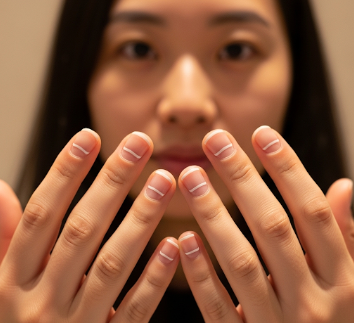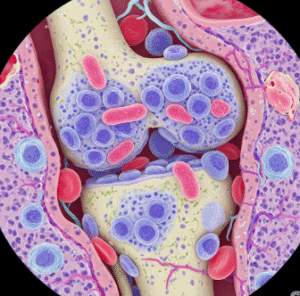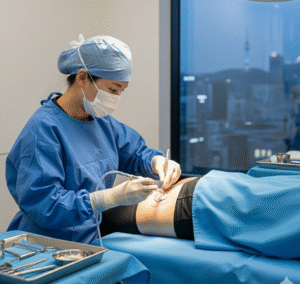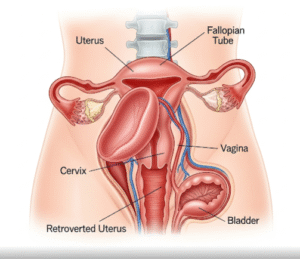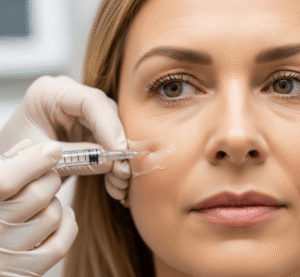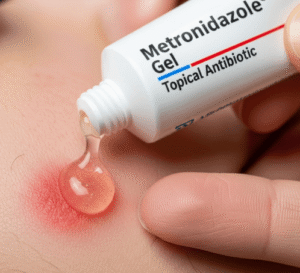Overview
Mees’ lines are transverse white bands (parallel to the lunula) that appear across the nails of the fingers or toes. Unlike Beau’s lines (which are indentations), Mees’ lines are discolorations that move forward with nail growth. These lines are usually a sign of systemic illness, poisoning, or severe physiological stress.
In Korea, dermatologists and internal medicine specialists diagnose Mees’ lines using nail examination, history-taking, and laboratory tests to identify the underlying condition such as arsenic poisoning, chemotherapy side effects, or systemic disease.
Key Facts
➤ Mees’ lines are white, transverse bands across the nails.
➤ They grow out with the nail over time.
➤ Associated with arsenic or heavy metal poisoning, chemotherapy, or systemic diseases.
➤ Different from Muehrcke’s lines (which don’t move with nail growth).
➤ In Korea, advanced toxicology and systemic disease evaluation is available for proper diagnosis.
What are Mees’ Lines?
Mees’ lines are non-blanching, white streaks that appear on the nail plate. They result from temporary disruption in nail matrix function caused by systemic stress, toxins, or illness. These lines can be found on one or multiple nails, often symmetrically.
Symptoms Associated with Mees’ Lines
Mees’ lines themselves are not painful but may be associated with underlying symptoms depending on the cause:
➤ History of toxin exposure (arsenic, thallium, heavy metals).
➤ General weakness or malaise (systemic illness).
➤ History of chemotherapy or radiation therapy.
➤ Gastrointestinal symptoms (if due to poisoning).
➤ Skin pigmentation changes or hair loss (arsenic poisoning).
Causes / Possible Causes of Mees’ Lines
The most common causes include:
Toxic Causes
➤ Arsenic poisoning (classic association).
➤ Thallium or other heavy metals.
Medical Causes
➤ Chemotherapy or radiation exposure.
➤ Renal failure.
➤ Heart failure.
➤ Severe infections (e.g., malaria, tuberculosis).
➤ Hodgkin’s lymphoma.
Other Causes
➤ Severe systemic stress or trauma.
➤ Post-surgical systemic illness.
When Should I See My Doctor?
Seek medical attention if you notice:
➤ Multiple white bands on nails without trauma.
➤ History of toxin or chemical exposure.
➤ Accompanying systemic symptoms like fatigue, fever, or swelling.
➤ New onset Mees’ lines after chemotherapy or severe illness.
Care and Treatment
Mees’ lines cannot be treated directly, but they usually disappear as nails grow out once the underlying cause is corrected. Management focuses on identifying and treating the underlying condition:
➤ Arsenic or heavy metal poisoning → Chelation therapy, toxin removal, supportive care.
➤ Chemotherapy-related lines → Supportive care, monitoring nail health.
➤ Systemic illness → Treat underlying infection, kidney, or heart disease.
➤ Nutritional support → Ensure adequate protein, vitamins, and minerals for nail health.
Treatment Options in Korea
Korea has advanced facilities for toxicology, oncology, and systemic disease management, ensuring accurate diagnosis and treatment of conditions linked with Mees’ lines.
Diagnosis
➤ Detailed nail examination by dermatologists.
➤ Blood and urine tests for heavy metals.
➤ Kidney, heart, and liver function tests.
➤ Imaging and biopsies if systemic disease is suspected.
Medical Treatments
➤ Chelation therapy for arsenic or heavy metal poisoning.
➤ Comprehensive cancer care (oncology support, chemotherapy, targeted therapies).
➤ Renal replacement therapy for kidney failure.
➤ Medications for infections or systemic diseases.
Supportive Care
➤ Nutritional therapy and supplements.
➤ Nail and skin care to support recovery.
➤ Long-term follow-up for chronic illnesses.

